
 Housing Preservation & Development311
Housing Preservation & Development311 Search all NYC.gov websites
Search all NYC.gov websites
Jewel Streets Neighborhood Plan
Jewel Streets Neighborhood Plan
Initiated by Jewel Streets residents in 2022, the Jewel Streets Neighborhood Plan offers a comprehensive neighborhood plan for the Jewel Streets. A long-term vision for the neighborhood emerged from a process that centered transparency, partnership, and local knowledge. The plan offers concrete strategies to address urgent infrastructure needs, unlock housing opportunity, and lay the foundation for a more resilient, connected, and livable neighborhood.
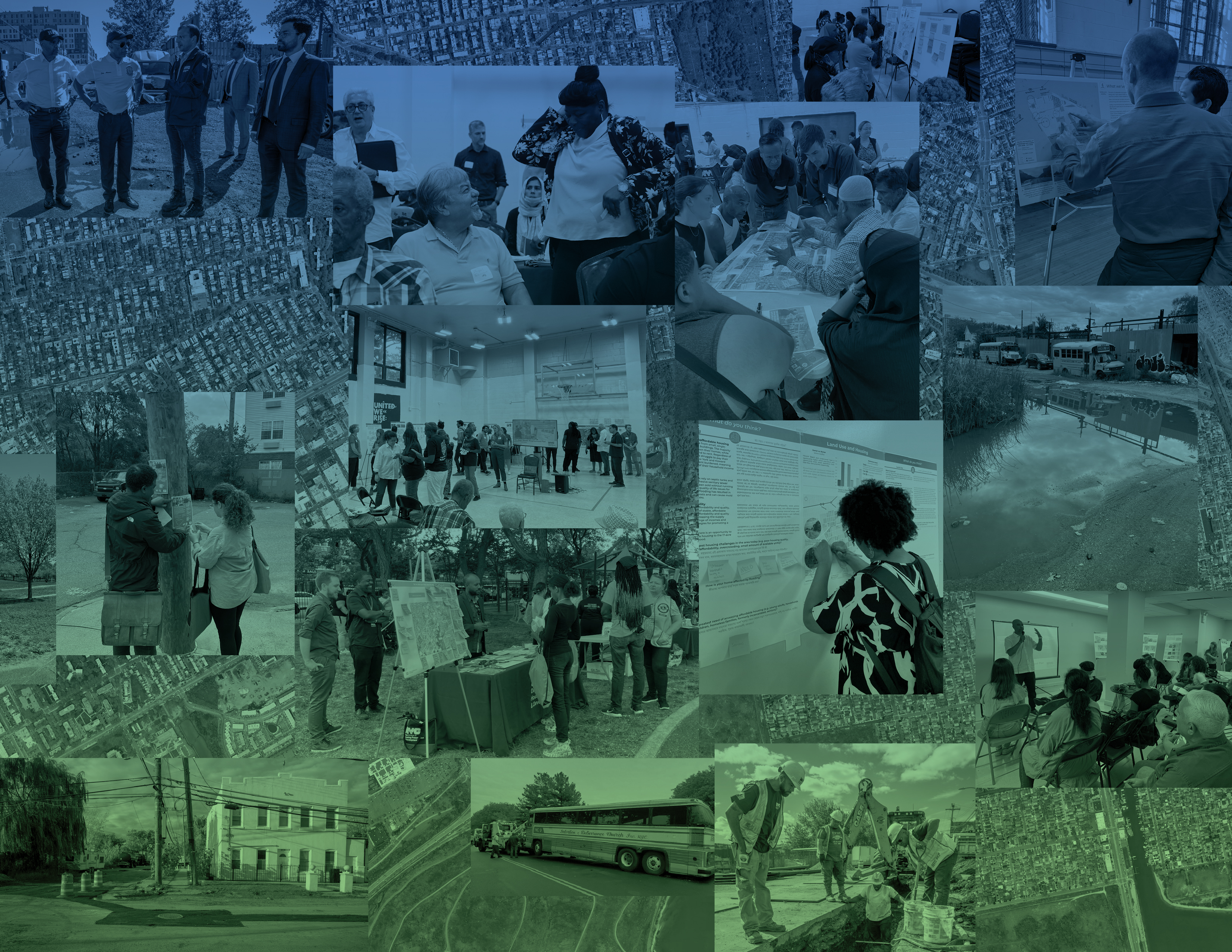
Resources
Resilient Acquisitions
The City will pilot a new Resilient Acquisitions program in the Jewel Streets. This program will enable the City to engage with interested residents to acquire a limited number of flood-vulnerable properties. As part of the pilot, the City will also work with homeowners to navigate options to retrofit their homes as the long-term drainage plan takes shape. Tenants living in homes whose owners choose to participate in the program will also be provided support services.
Who is eligible?
All Jewel Streets owners of 1-4 family homes are welcome to submit an expression of interest. Currently the City is collecting expressions of interest from Jewel Streets homeowners to understand who may be interested in an acquisition as the pilot is developed.
Learn more and fill out the expression of interest form.
Questions? Email info-RA@recovery.nyc.gov
Housing Resources
General Housing Resources:
- Attend one of HPD’s upcoming housing resource events
- Apply for affordable housing lotteries
- Connect with a housing ambassador to help you apply for affordable housing lotteries
- Explore more housing resources
- Call HPD's navigators at 212-863-6300 or email AskHPD@hpd.nyc.gov
Homeowner Resources:
- Programs like FloodHelpNY and HomeFix provide financial support and education to homeowners facing flooding issues. For more information, contact the Center for New York City Neighborhoods at info@cnycn.org or call 212-566-3050.
- The HomeFirst Down Payment program supports low- and moderate-income first-time homebuyers.
- The Homeowner Help Desk assists low-and middle-income homeowners at risk of being displaced from their communities.
Renter Resources:
Goals and Strategies
Vision: Create a more resilient and connected Jewel Streets with better drainage, improved streets, and new housing that can withstand flooding and future climate impacts.
Since June 2022, the City has engaged with residents, community groups, and local elected officials across the neighborhood. Public feedback has shaped five goals for the future. Each goal has a set of strategies to guide both the short- and long-term work for the neighborhood. Review the goals and spotlighted strategies below, and read more in the Plan.
Goal 1: Reduce flooding now and in the future
Strategy Spotlight: Install sanitary sewers where residents currently rely on septic systems
The City’s infrastructure plan includes new sanitary sewers, ending reliance on septic systems for current and future residents.
Goal 2: Ensure residents have access to safe, resilient, and affordable homes
Goal 3: Make streets safer and better connected
Strategy Spotlight: NYC DOT plans for Linden Boulevard and Conduit Avenue
DOT is advancing the design process for the Linden Boulevard Bus Priority and Safety Improvements Project, focused on the corridor between Fountain Avenue and Conduit Avenue. DOT is leading a long-term planning effort for Conduit Avenue and Conduit Boulevard to address the difficulty crossing the corridor, roadway safety concerns, and separation of communities on either side.
Goal 4: Encourage redevelopment of vacant land with new affordable housing, stores, and open space
Strategy Spotlight: City-owned site master plan
The mostly vacant 17-acre City-owned site offers an opportunity to reconnect the surrounding neighborhoods with additional streets, open space, and mixed-used development with affordable housing and community amenities, and green infrastructure.
Goal 5: Increase access to essential business, job, and social services
Background

What are the Jewel Streets?
The Jewel Streets refer to the north-south streets named after various jewels: Ruby, Emerald, Amber, and Sapphire Streets. The 12-block neighborhood straddles East New York, Brooklyn and Lindenwood, Queens and is known to residents as “The Hole” due to its sunken streets. The low-lying area’s high water table and lack of comprehensive stormwater and sanitary sewer infrastructure contribute to year-round flooding, even on sunny days.
Why do the Jewel Streets Need a Plan?
Flooding is a critical concern for many residents and is connected to other issues. While originally planned as a residential neighborhood, the lack of sewer infrastructure makes it costly to maintain or construct a home. Today, most streets contain open industrial uses or overgrown, vacant lots, including a 17-acre City-owned site. And though wild plants grow tall along street edges, industrial uses and septic tank leaks have contaminated the land and groundwater.
Getting around safely is also a challenge. Pedestrians have few sidewalks or crosswalks, and it is typical to see tractor trailers, RVs and other abandoned vehicles stored on the street. Linden Boulevard, an eight-lane commercial roadway, cuts across the Jewel Streets, and Conduit Avenue separates the neighborhood from the closest subway station. While these wide, busy streets provide important connections outside of the neighborhood, they also create barriers due to their width and dangerous crossings.
These various conditions are examples of historic disinvestment and environmental injustice in the area. HPD’s plan offers solutions to these interconnected problems.
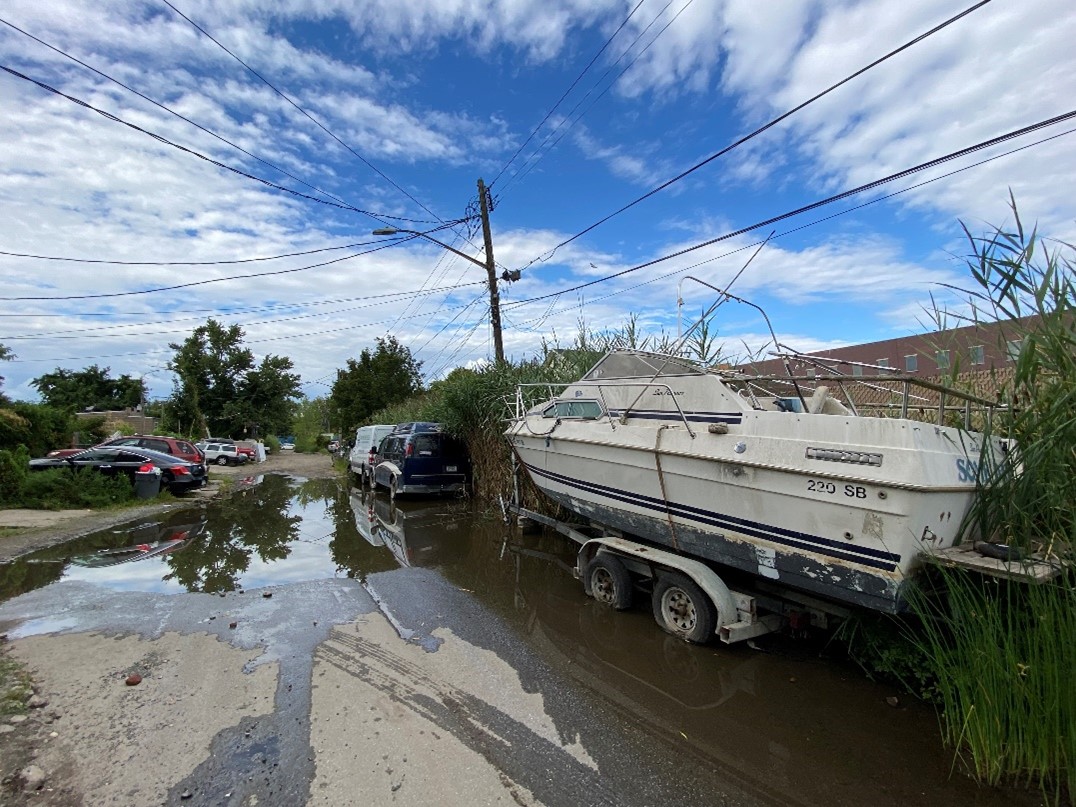
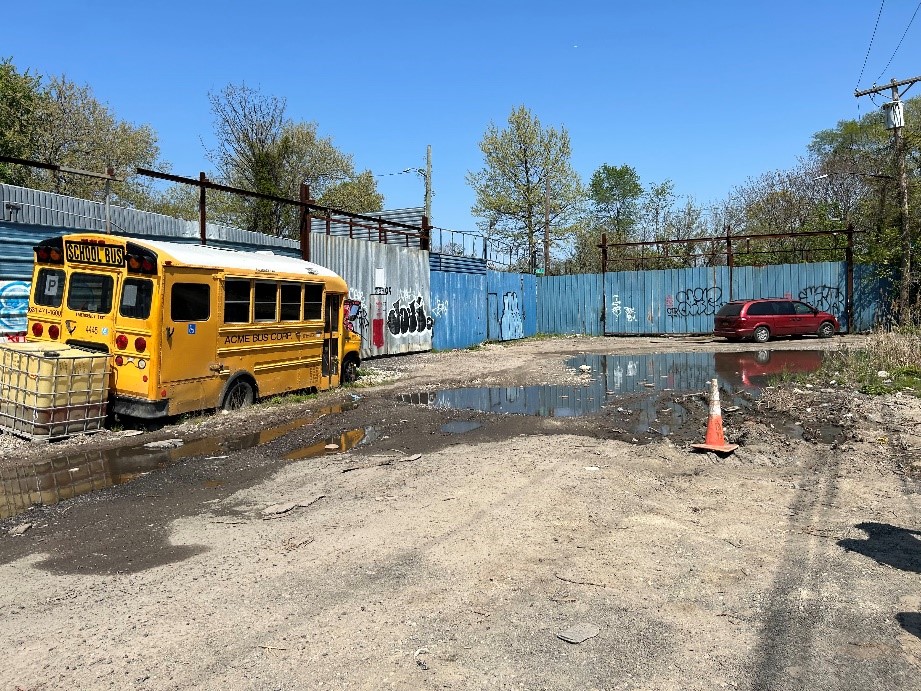
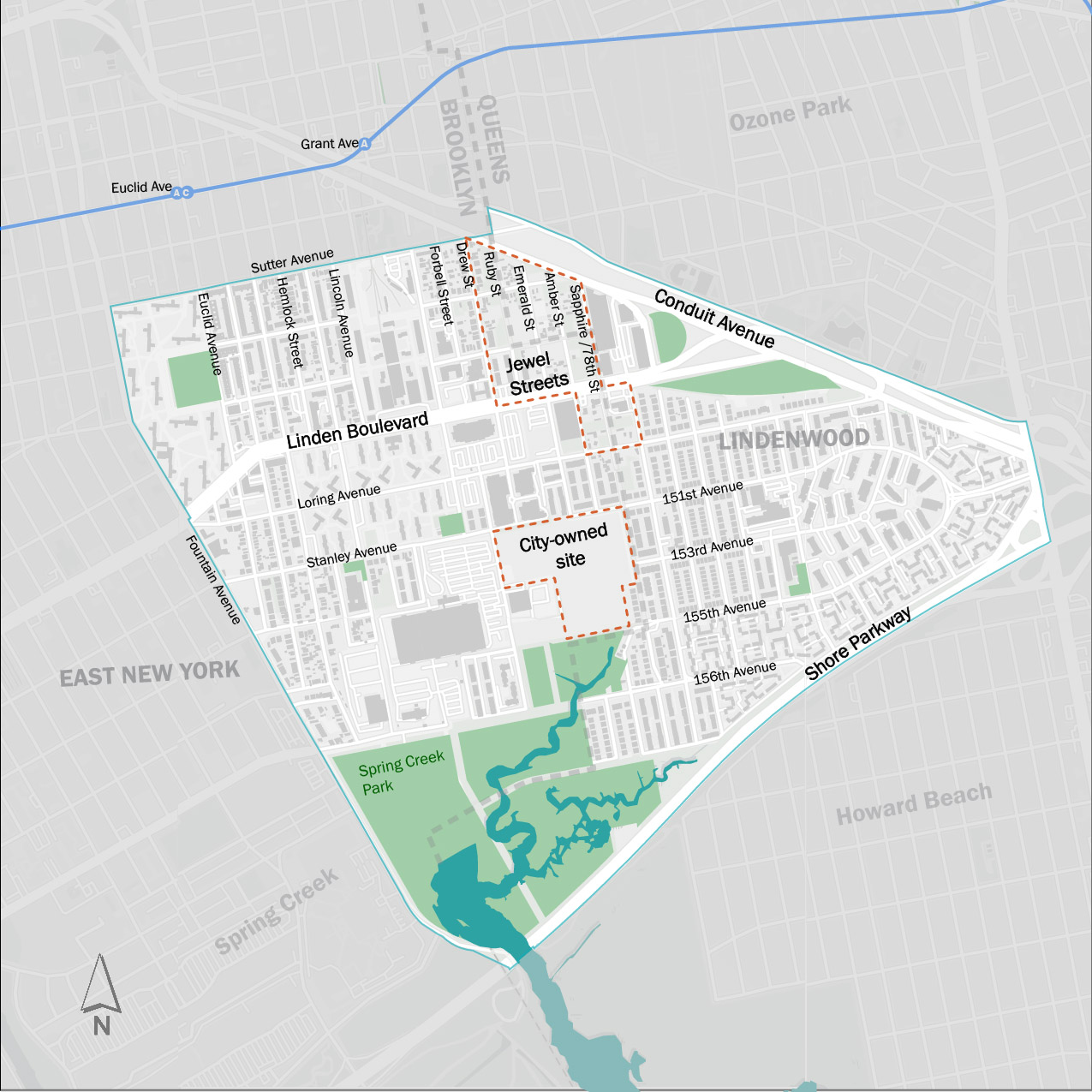
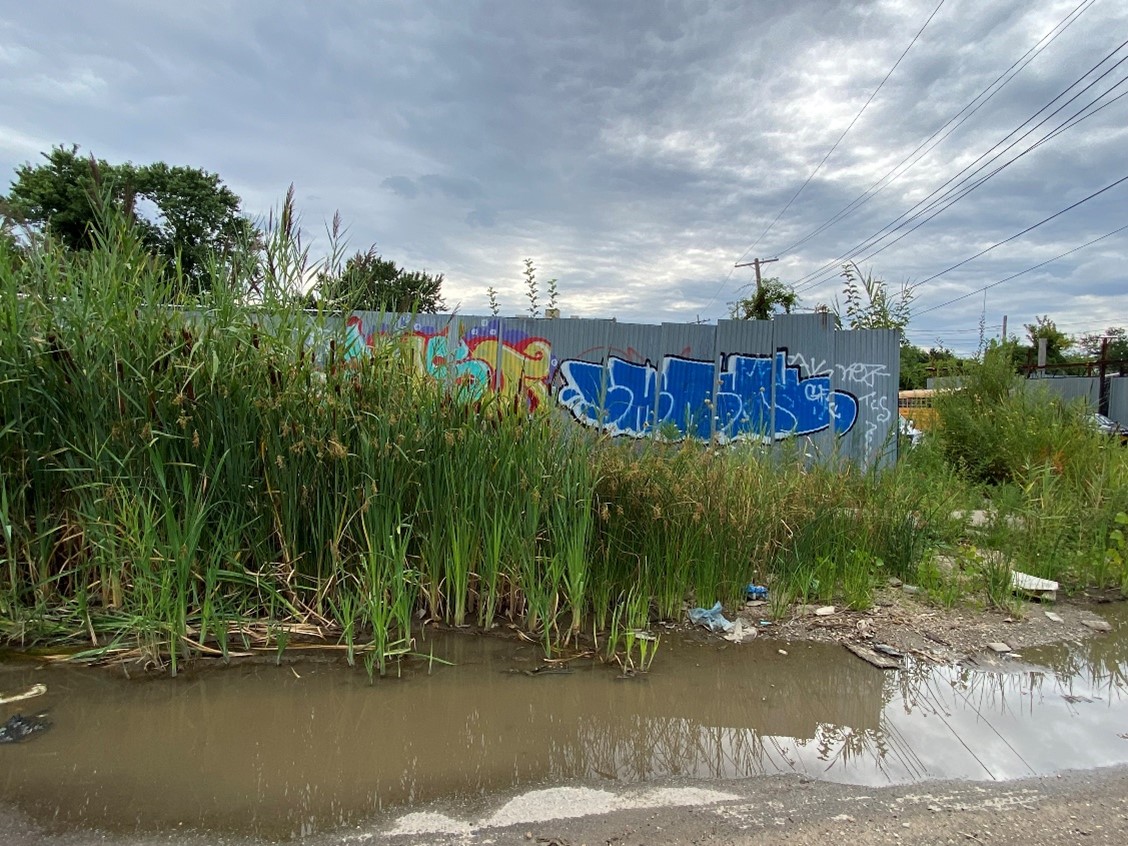
The Planning Process

In February 2022, residents and local leaders from the Jewel Streets sent City agencies a letter requesting a community-driven process to address longstanding infrastructure challenges and promote environmental justice. This letter led to an HPD-led neighborhood planning process that coordinated resources and input from three community-based organizations; 16 city agencies; and local, state, and federal lawmakers.
HPD’s neighborhood planning process is a yearslong collaboration with a community to create a comprehensive plan for the neighborhood’s future. The process builds on what is great about a neighborhood today and develops strategies to solve major issues affecting local communities. The process produces an action plan to guide city investment in infrastructure, services, and amenities. To implement the plan, HPD works with the relevant City agencies.
Residents and community stakeholders remain vital partners in the Jewel Streets Neighborhood Plan. Each stage of the planning process centered community leadership, from biweekly meetings with local advocates and elected officials to public workshops and quarterly quality-of-life meetings.
Progress To Date
In February 2025, after two years of partnering with residents and community advocates, we released the Jewel Streets Progress Report. This report shared our progress on key health, safety, and quality of life challenges. Read the 2024 Progress Report!
Short-term improvements
Throughout the planning process, city agencies invested in short-term projects to improve the quality of life for neighborhood residents. So far, the City has invested $1 million to build the neighborhood’s flood resiliency, through strategies such as the installation of storm sewers and catch basins at three intersections. The Department of Buildings has worked to address non-residential activity in the Jewel Streets through efforts such as the issuance of 237 violations to illegal commercial and industrial businesses in the neighborhood. The Department of Sanitation has cleared more than 80 tons of debris from 20 vacant lots, among other efforts to address illegal dumping. Read more about progress on quality-of-life issues in the plan .
Next Steps
Realizing the vision of this neighborhood plan will take many years. As we transition from planning to implementation, close collaboration with Jewel Streets stakeholders will remain the foundation. We hope you’ll stay engaged throughout the process. Sign up for updates !
Infrastructure: The City’s infrastructure agencies—DEP, DOT and DDC—will continue to collaborate to finalize plans for the Bluebelt, sewer system and street network.
Housing Mobility: The City will meet with Jewel Streets residents to inform them about their options through the Resilient Acquisitions Pilot and connect with other housing resources.
Land Use Changes: Critical steps on the path to public review of the proposed land use changes will occur in 2026. When the public approvals process begins, multiple rounds of community input and elected official review will inform the changes.
City-Owned Site RFP: The City will publish a Request for Proposals (RFP) to develop a mixed-use housing and open space vision for the City-owned site. In the coming months, HPD will begin the first step of its development process, Community Visioning, to inform the requirements for the RFP(s).
Upcoming Events:
- October 21, 2025: City goes to Brooklyn Community Board 5
- October 29, 2025 and November 6, 2025: City goes to Queens Community Board 10 (land use committee and full board)
- Mid-November / early December 2025: Pre-Scoping Virtual Info Session
- Mid-December 2025: Rezoning environmental review public scoping
Sign Up to Receive Updates
Looking for updates on the plan or resources coming to the neighborhood? Sign up for our mailing list to receive regular project updates.


